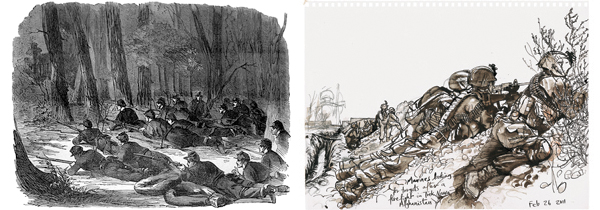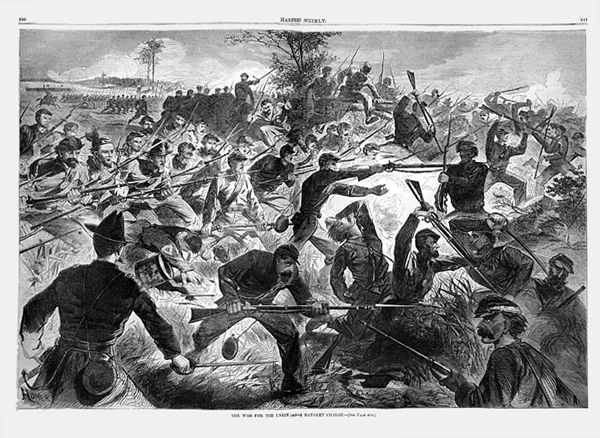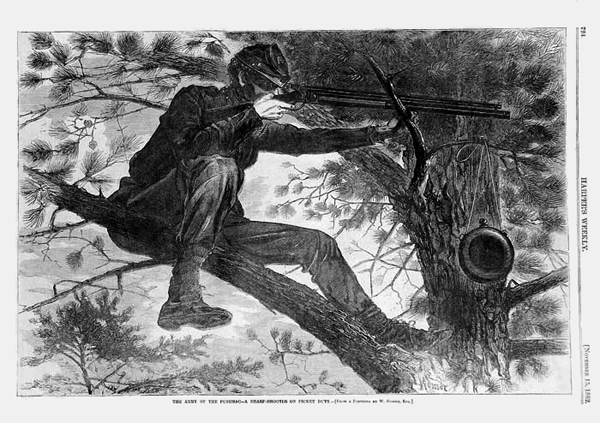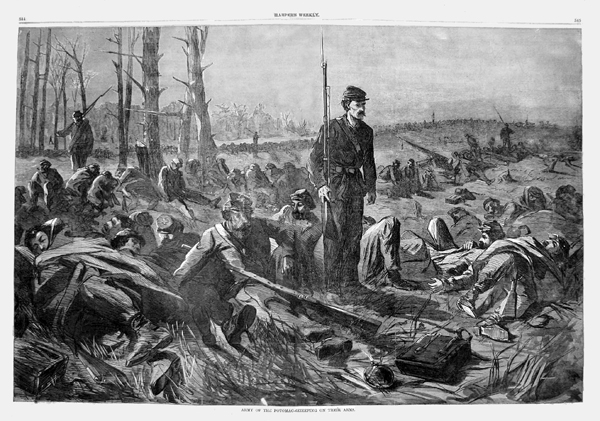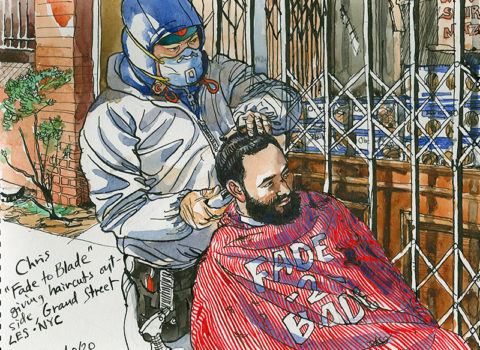The August 2011 issue of Harper’s Magazine features paintings by Steve Mumford, who embedded with the 3/6 Marines in Marjah, Helmand Province, in 2010 and with the 2/3 Marines in Nawa, Helmand Province, in 2011. Mumford’s images were inspired by Winslow Homer’s Civil War studies, which appeared in Harper’s Weekly during that conflict. Below, a gallery of Homer’s work, with an introduction by Mumford.
In February of 2003, I was listening to radio reports of journalists embedding with military units that were gearing up for the invasion of Iraq. At the time, I was working on a series of paintings about the Vietnam War. I remembered that conflict through the impressions I formed as a child — through photos published in Life magazine, and through the anti-war marches my mother brought me to on the Boston Common.
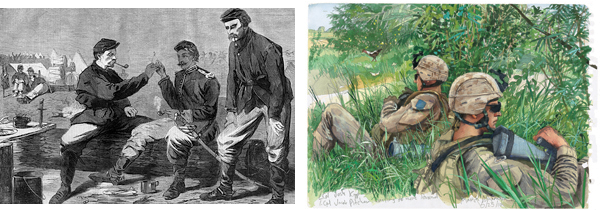
I grew up looking at Winslow Homer’s paintings and watercolors in Boston’s museums, and occasionally in New York’s Metropolitan Museum of Art; I loved their drama and their seemingly straightforward realism. What I found moving about Homer’s work was that it wasn’t directly about the morality of the Civil War, so much as it sought to recreate the experience of the soldiers. His art rarely read as propaganda. It showed the powerful bonding among men on the front lines, as well as the terror. Homer had experienced it and drawn it.
It hit me unexpectedly that I could go to Iraq as an artist. By early 2003, it was already too late to be embedded, so I flew to Kuwait and haunted the fancier hotels until a couple of French journalists offered me a ride to Baghdad in their SUV. Recently, after many trips to Iraq, and with the country’s attention shifting to the worsening situation in Afghanistan, I joined the Marines in Helmand province to continue drawing America’s war zones.


